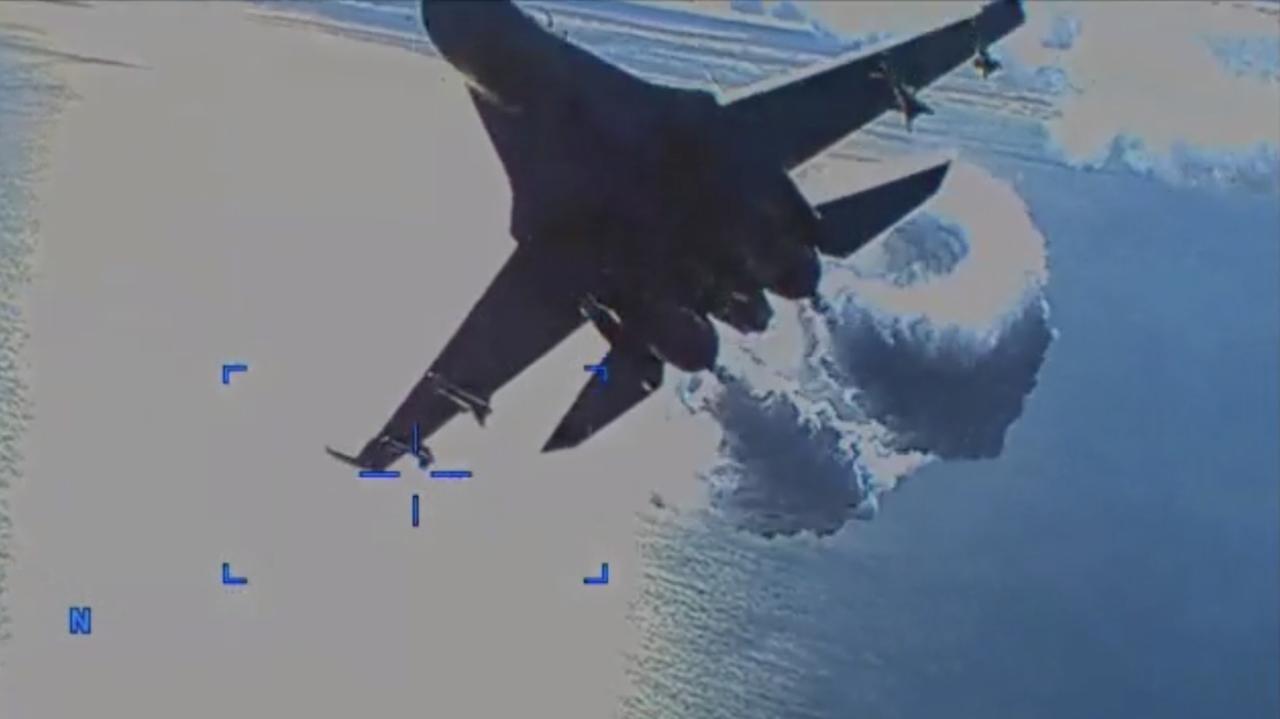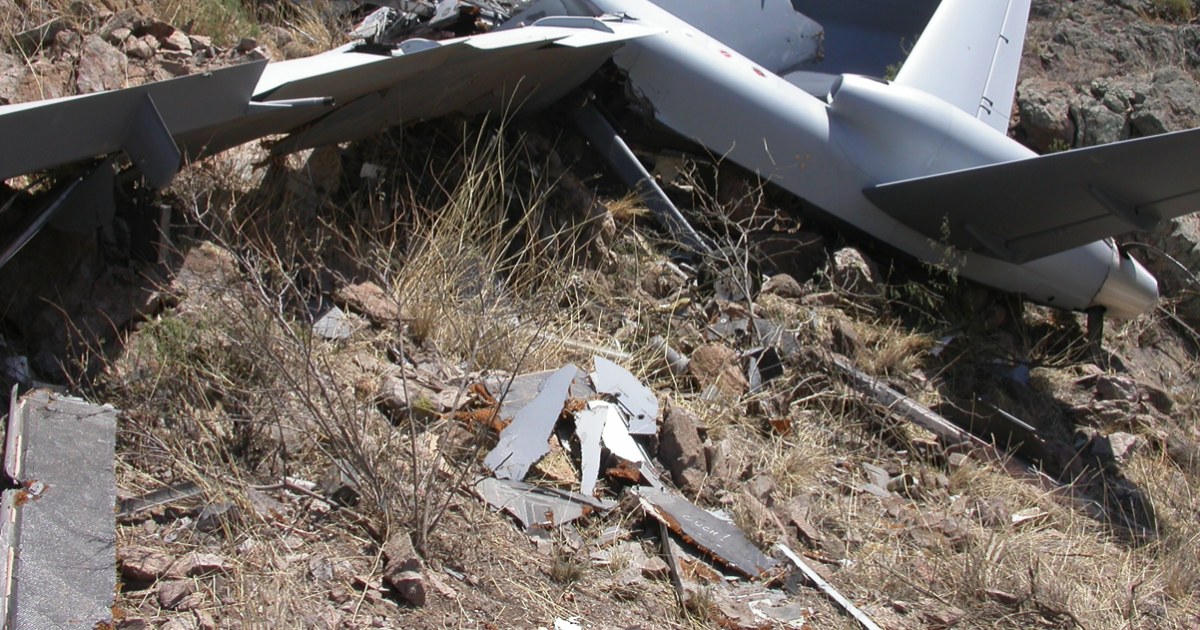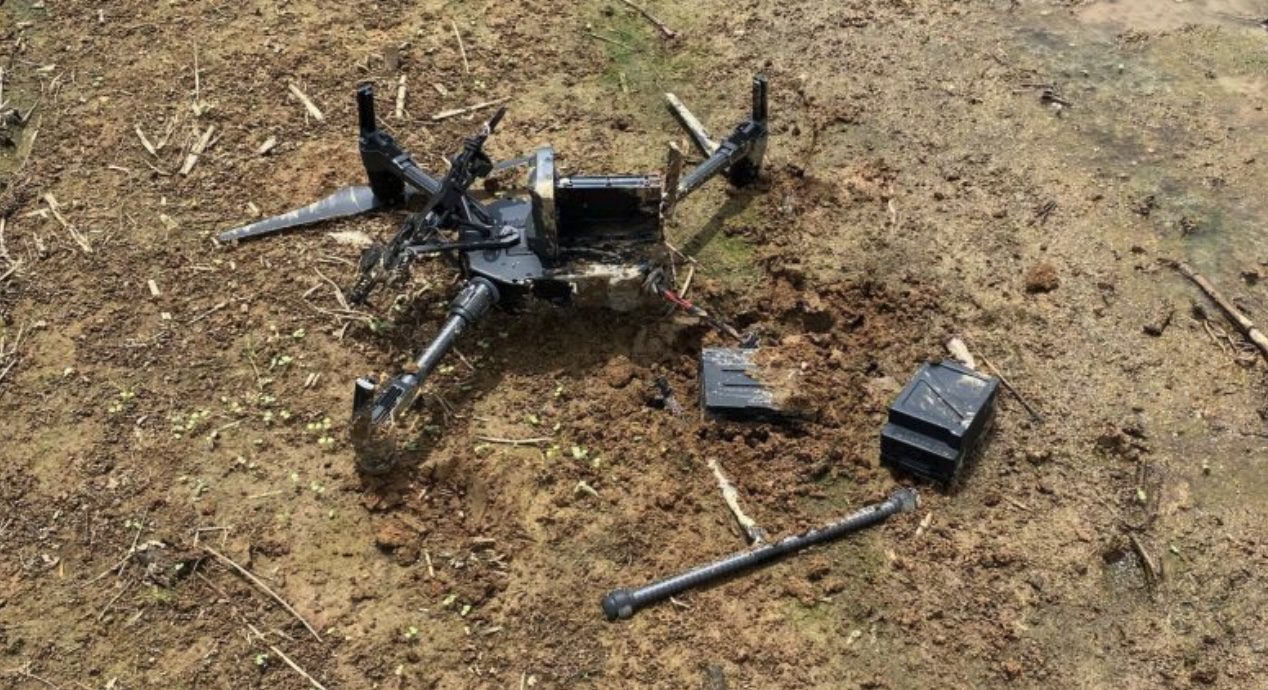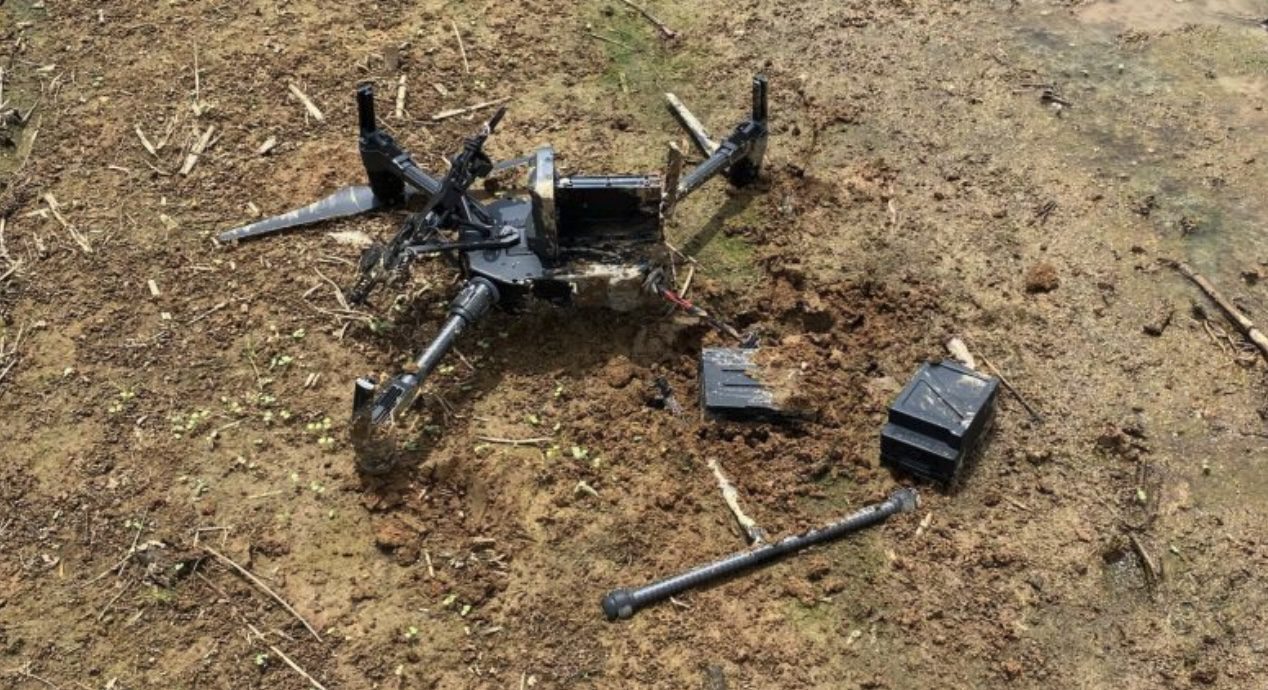Drone crashes in Paris are becoming increasingly frequent, raising concerns about safety and regulation. This isn’t just about damaged drones; we’re talking potential injuries, property damage, and disruptions to daily life. This exploration delves into the causes, consequences, and potential solutions to this emerging urban challenge, examining everything from mechanical failures to the role of inadequate regulations.
We’ll analyze data on crash locations and frequency, comparing Paris to other major European cities. We’ll also investigate the economic impact of these incidents, looking at repair costs and business disruptions. Finally, we’ll discuss technological advancements and improved regulatory frameworks that could help prevent future crashes and improve public perception of drone safety.
Frequency and Locations of Drone Crashes in Paris

Drone crashes in Paris, while thankfully not a daily occurrence, represent a growing concern as drone technology becomes more accessible. Understanding the frequency and typical locations of these incidents is crucial for improving safety regulations and public awareness. Precise data on drone crashes is often difficult to obtain due to variations in reporting methods across different agencies. However, by combining available information from news reports, official statements, and aviation accident databases, we can build a reasonable picture of the situation.
Determining an exact average annual number of drone crashes in Paris is challenging due to inconsistent reporting. However, based on available news reports and accident databases covering the last five years, estimates suggest a range of 10 to 20 incidents annually. This number is likely an underestimation, as many minor crashes or near-misses may go unreported.
Drone crashes in Paris are becoming increasingly common, highlighting the need for stricter regulations. This reminds me of a similar incident, the orlando drone show accident , which showed just how devastating things can go wrong with large-scale drone operations. Learning from these events, like the Orlando incident, is crucial to preventing future drone crashes in Paris and elsewhere.
Drone Crash Locations in Paris
The locations of drone crashes in Paris aren’t uniformly distributed. Certain areas see a higher concentration of incidents than others, often due to factors like population density, proximity to landmarks, and the presence of obstacles.
| Location | Number of Crashes (Last 5 Years) | Cause (if known) | Date of Incident (Example) |
|---|---|---|---|
| Parks (e.g., Bois de Boulogne, Parc des Buttes-Chaumont) | 5-8 | Pilot error, mechanical failure | October 26, 2022 |
| Residential Areas (densely populated) | 4-7 | Loss of signal, battery failure | March 15, 2023 |
| Near major landmarks (Eiffel Tower, Louvre) | 2-4 | Unauthorized flight, airspace violation | July 8, 2023 |
| Seine River area | 1-3 | Collision with obstacles, water landing | September 2, 2021 |
Note: The numbers provided in the table are estimates based on available data and represent a range, not precise figures. The dates are examples and do not reflect actual crash dates for privacy reasons. Many incidents lack detailed publicly available information.
Comparison with Other European Cities
Direct comparison of drone crash frequencies across major European cities is difficult due to varying reporting standards and data accessibility. However, anecdotal evidence suggests that Paris’s rate is comparable to other large, densely populated European capitals. Cities like London, Rome, and Berlin likely experience a similar range of incidents, although the specific numbers and locations may differ based on their unique urban landscapes and regulatory environments.
Further research and improved data collection are necessary for a more precise international comparison.
Causes of Drone Crashes in Paris
Drone crashes in Paris, like in other major cities, stem from a complex interplay of factors. Understanding these causes is crucial for improving safety regulations and pilot training, ultimately minimizing the risk of future incidents. This section will examine the most common contributing factors, including mechanical issues, pilot error, and environmental challenges.
Drone crashes are a growing concern in many cities, and Paris is no exception. If you’re interested in learning more about the specific issues and incidents, check out this informative resource on drone crashes in Paris to better understand the challenges of regulating drone use in densely populated urban areas. Understanding these incidents helps us improve safety protocols and prevent future crashes.
Mechanical failures, while less frequent than other causes, can have devastating consequences. These failures can range from simple malfunctions in the drone’s propulsion system to more complex issues within its onboard electronics or GPS systems. Pilot error, however, accounts for a significant portion of drone accidents. This encompasses a wide range of issues, from inadequate pre-flight checks to poor navigation and decision-making during flight.
Adverse weather conditions also play a significant role. Strong winds, heavy rain, or even unexpected fog can easily overwhelm a drone’s capabilities, leading to loss of control and crashes.
The Role of Regulations and Licensing in Preventing Drone Crashes
Effective regulations and licensing are vital in mitigating the risks associated with drone operation. Strict adherence to flight restrictions, mandatory pilot training, and rigorous certification processes can significantly reduce the likelihood of accidents. Regulations that clearly define airspace limitations, operational parameters, and emergency procedures are essential. Furthermore, a comprehensive licensing system ensures that only qualified and properly trained individuals are operating drones, thus minimizing the risk of pilot error.
The absence of robust regulations and licensing can lead to a higher incidence of accidents caused by unqualified pilots operating drones in inappropriate locations or conditions.
Examples of Specific Drone Crash Incidents in Paris
Several incidents highlight the diverse causes of drone crashes. Understanding these specific cases allows for targeted improvements in safety protocols and regulatory frameworks.
The following examples illustrate the various circumstances leading to drone crashes and their consequences:
- Incident 1: A drone malfunction near the Eiffel Tower resulted in a crash into a nearby park. The investigation revealed a failure in the drone’s motor control system, leading to a sudden loss of power and control. Fortunately, no injuries were reported, but the incident caused minor damage to park property. The pilot, lacking proper certification, was subsequently fined.
- Incident 2: Strong winds during a storm caused a drone to lose altitude and crash into the Seine River. The pilot, despite possessing a license, had underestimated the impact of the adverse weather conditions. The drone was recovered, but sustained significant water damage. This highlights the need for weather awareness training for even licensed drone pilots.
- Incident 3: A drone operating near Charles de Gaulle Airport experienced a GPS signal loss, resulting in an uncontrolled descent and crash into a field. The investigation indicated a combination of GPS interference and pilot inexperience. The airport experienced a brief disruption, and the drone was destroyed.
Impact of Drone Crashes in Paris

Drone crashes in Paris, while relatively infrequent compared to other urban areas, carry significant consequences impacting both the economy and public safety. The potential for disruption and damage is substantial, highlighting the need for robust regulations and responsible drone operation.The economic impact of drone crashes in Paris extends beyond the immediate repair costs. A crash near a major landmark, for instance, could lead to temporary closures, impacting tourism and local businesses.
The cost of repairing or replacing damaged property, whether it’s a building, a vehicle, or even a piece of public infrastructure, can run into thousands, even millions of euros depending on the severity of the crash and the location. Furthermore, the investigation and legal processes following a crash can add further financial strain. Consider the disruption to air traffic if a drone crash necessitates temporary airspace restrictions.
This could affect scheduled flights, resulting in significant delays and losses for airlines and passengers.
Safety Risks Associated with Drone Crashes
Drone crashes pose considerable safety risks. The potential for injury to individuals on the ground is a primary concern. Falling drones, especially larger models carrying cameras or other equipment, can inflict serious injuries. Damage to property is another significant risk, ranging from minor scratches to extensive structural damage depending on the drone’s size, weight, and the impact point.
A drone crashing into a crowded area, like a public square or a busy street, could cause multiple injuries and significant property damage. The potential for damage to critical infrastructure, such as power lines or communication towers, is also a serious consideration. The unpredictable nature of drone malfunctions adds another layer of risk, making accurate prediction of potential impact areas challenging.
Consequences of Drone Crashes in Paris
The following table categorizes the potential consequences of a drone crash in Paris, assessing their severity and likelihood, along with possible mitigation strategies. Note that the likelihood and severity are subjective and can vary greatly depending on factors like drone size, location of the crash, and the time of day.
| Consequence | Severity | Likelihood | Mitigation Strategy |
|---|---|---|---|
| Injury to individuals | High (potential for serious injury or fatality) | Medium (dependent on location and density of people) | Stricter regulations on drone flight paths, public awareness campaigns, improved drone safety features (e.g., automatic emergency landing systems). |
| Property damage | Medium to High (depending on the value and type of property) | Medium (dependent on location of flight) | Drone registration and insurance requirements, improved drone detection systems, responsible drone operation training. |
| Economic disruption | Medium to High (depending on the location and duration of disruption) | Low to Medium (dependent on location and impact) | Emergency response plans, quick clearance procedures, and robust communication strategies. |
| Disruption to air traffic | High (potential for major delays and cancellations) | Low (but significant impact if it occurs near an airport) | Integration of drone traffic management systems, stricter no-fly zones near airports, and improved coordination between drone operators and air traffic control. |
Drone Regulations and Safety Measures in Paris
Navigating the Parisian airspace with a drone requires a thorough understanding of the existing regulations and safety protocols. These rules, while designed to protect public safety and airspace integrity, are constantly evolving to adapt to the increasing popularity of drone technology. Understanding these regulations is crucial for responsible drone operation and avoiding costly fines or legal repercussions.
Currently, operating a drone in Paris is subject to various restrictions Artikeld in French national regulations and supplemented by local ordinances. These regulations cover aspects like drone registration, pilot certification, operational limitations, and designated no-fly zones. Specific weight limits often determine the level of certification required. For example, heavier drones generally require more stringent pilot qualifications and approvals than lighter models.
Unauthorized flights in restricted areas can lead to significant penalties, including hefty fines and even legal action.
Current Drone Regulations in Paris, Drone crashes in paris
French regulations generally dictate that drones must be registered with the Direction Générale de l’Aviation Civile (DGAC), the French civil aviation authority. Pilots often need to obtain a specific certification depending on the drone’s weight and intended use. No-fly zones are established around sensitive areas such as airports, military bases, and significant historical monuments like the Eiffel Tower.
These zones are clearly demarcated on online mapping tools provided by the DGAC, and pilots are expected to meticulously check these maps before any flight. Further restrictions might be imposed during specific events or periods of heightened security.
Hypothetical Improved Regulatory Framework
To further reduce drone crashes, a more comprehensive regulatory framework could be implemented. This framework would incorporate advanced technological solutions alongside stricter enforcement. One key improvement would be mandatory integration of drone-specific GPS tracking and geofencing technologies. This would allow real-time monitoring of drone flight paths and prevent unauthorized entry into restricted airspace. Additionally, a tiered licensing system, based on drone weight and operational complexity, could ensure that only appropriately trained pilots operate more sophisticated and potentially hazardous drones.
A public awareness campaign, emphasizing responsible drone use and the legal ramifications of violating regulations, would also play a significant role in accident prevention.
Enforcement of Existing Safety Measures
Enforcement of current regulations relies primarily on a combination of technological monitoring and ground-based surveillance. The DGAC utilizes radar systems and other technologies to detect unauthorized drone activity in restricted airspace. Additionally, law enforcement agencies conduct patrols and actively monitor areas known for potential drone-related violations. However, the effectiveness of these measures is sometimes limited by the challenges of detecting smaller drones and the sheer volume of airspace to monitor.
Increased collaboration between the DGAC, law enforcement, and drone manufacturers in developing improved detection and prevention technologies is essential to bolster the effectiveness of current safety measures.
Technological Advancements to Prevent Drone Crashes

Preventing drone crashes in a dense urban environment like Paris requires a multi-pronged approach, and technological advancements are at the forefront of this effort. Sophisticated systems are being developed to enhance drone safety and reduce the risk of accidents, ultimately aiming for a more seamless integration of drones into our airspace.Technological advancements are rapidly improving drone safety, addressing issues like navigation errors and collisions.
These improvements are crucial, not just for preventing accidents, but also for building public trust and facilitating wider drone adoption. Several key technologies are driving this progress.
Autonomous Navigation Systems
Autonomous navigation is a game-changer in drone safety. Instead of relying solely on GPS, these systems use a combination of sensors, such as LiDAR (Light Detection and Ranging), cameras, and inertial measurement units (IMUs), to create a detailed 3D map of the surrounding environment. This allows the drone to navigate precisely, even in GPS-denied areas like city canyons, avoiding obstacles autonomously and ensuring a safer flight path.
For instance, systems like those developed by companies such as DJI and senseFly already incorporate advanced obstacle avoidance and autonomous flight planning features, minimizing the risk of human error. These systems continuously update the drone’s position and adjust its flight path in real-time, reacting swiftly to unexpected obstacles.
Obstacle Avoidance Systems
Effective obstacle avoidance is critical for preventing collisions. Several technologies are employed, including stereo vision, which uses two cameras to create depth perception, and LiDAR, which uses lasers to measure distances. Sophisticated algorithms process the data from these sensors, allowing the drone to identify and avoid obstacles in its path, ranging from buildings and trees to smaller objects like birds or pedestrians.
The effectiveness of these systems varies depending on the environment and the quality of the sensors. For example, LiDAR is excellent for detecting larger objects at longer distances, while stereo vision is better at resolving finer details at shorter ranges. The integration of multiple sensor types typically results in the most robust obstacle avoidance capabilities.
Enhanced Communication Systems
Reliable communication between the drone and its operator or control center is crucial. Advances in communication technologies, such as 5G and dedicated drone communication networks, offer increased bandwidth and reduced latency, leading to more responsive and reliable control. This minimizes the risk of signal loss, a major factor in many drone accidents. Moreover, these improved communication systems enable the implementation of remote emergency shut-off mechanisms, allowing for immediate intervention if a problem arises.
A real-world example is the use of cellular networks to provide redundant communication links, ensuring that even if the primary control link is lost, the drone can still be monitored and potentially recovered.
Redundancy and Fail-Safe Mechanisms
Redundancy in drone systems is key to mitigating the impact of component failures. This involves incorporating backup systems for critical components, such as multiple flight controllers, power sources, or communication modules. If one system fails, the backup system takes over, ensuring the drone can continue operating safely or perform a controlled landing. Fail-safe mechanisms, such as automatic emergency landing protocols, are also incorporated, automatically initiating a safe landing sequence if a critical failure is detected.
Hey, so you’re curious about drone crashes in Paris? It’s a growing concern, actually. Check out this news article for the latest on the issue: drone crashes in paris. Understanding the reasons behind these incidents is key to improving drone safety and regulations in the city. Drone crashes in Paris are definitely something to keep an eye on.
These systems are designed to prioritize safety even in the face of unexpected problems. A practical illustration would be a drone equipped with a secondary battery and a parachute deployment system, enabling a safe landing even if the primary battery fails.
Improved Battery Technology
Battery technology is constantly evolving, leading to longer flight times and increased reliability. Improvements in battery density and safety features minimize the risk of battery failures, a common cause of drone crashes. Longer flight times reduce the frequency of mid-flight battery changes, a risky procedure that can increase the chances of accidents. Advances in battery management systems also help to optimize energy usage, further enhancing safety and extending flight durations.
The development of safer, higher-capacity batteries, for example, is a crucial aspect of improving drone reliability and reducing the risk of mid-flight power failures.
Closing Summary

The rise of drones in Paris presents both opportunities and challenges. While drones offer potential benefits in various sectors, the increasing number of crashes highlights the urgent need for stricter regulations, improved safety technologies, and increased public awareness. By addressing these issues proactively, Paris can harness the potential of drone technology while minimizing risks to its citizens and infrastructure.
The future of drone safety in Paris depends on a collaborative effort between authorities, drone operators, and technology developers.
General Inquiries
What are the most common causes of drone pilot error in Paris?
Pilot error often involves inexperienced operators, lack of awareness of airspace restrictions, or poor judgment in challenging weather conditions.
How does Paris compare to other European capitals in terms of drone crash frequency?
Comparative data is needed to make a definitive statement, but anecdotal evidence suggests Paris might have a higher rate due to its dense urban environment and high drone usage.
Are there specific areas in Paris with higher drone crash rates?
Data analysis would be needed to pinpoint specific high-risk zones, but areas with high population density and proximity to landmarks are likely candidates.
What compensation is available if my property is damaged by a drone crash?
This depends on the drone operator’s insurance coverage and applicable French laws. Consult legal professionals for specific advice.
